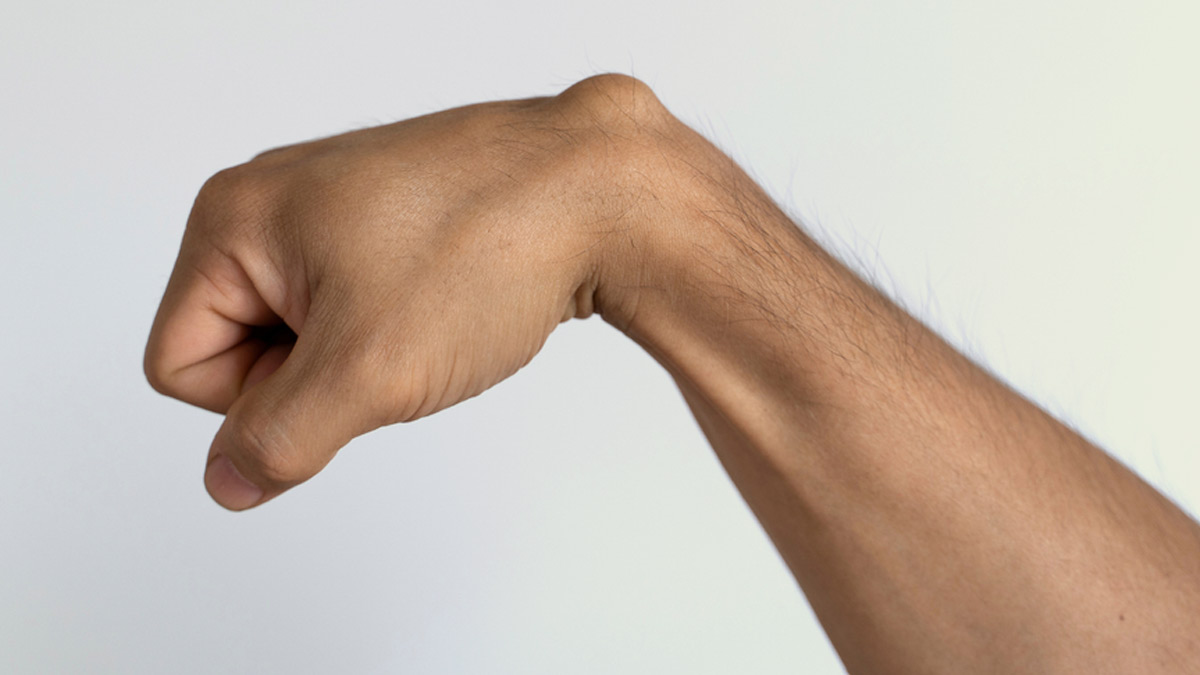
Lumps on the body can mean anything. While cancer is the first thought that comes to mind, most skin lumps and swellings are benign and harmless.
A ganglion cyst is one such fluid-filled lump that is non-cancerous and usually occurs over a joint or in a tendon in the hand or wrist. Also known as a Bible cyst, it got its name from a common home remedy in the past that involved hitting the cyst with a Bible or other thick book to try to make the cyst rupture or pop.
Table of Content:-
Though the condition isn’t life-threatening, we spoke to an expert to understand why it occurs and how to manage it.
Also Read: What Are Ovarian Cysts? Know Its Symptoms And Treatment Options
What Is Wrist Ganglion Cyst?

Dr Thirumalesh K Reddy, Lead Consultant, Joint Replacement and Arthroscopic Surgery, Aster CMI Hospital, Bengaluru, describes a wrist ganglion cyst as a noncancerous lump filled with a thick, jelly-like fluid, firm or spongy to touch.
As far as the appearance goes, it is usually a round or oval-shaped lump just below the surface of the skin, most commonly on the wrist, either on the back of the hand (dorsal) or the palm side (volar), says Dr Reddy, adding that it is less commonly found around the foot, ankle, or knee.
According to him, the exact reasons for the cyst remain unknown; however, possible causes include:
Leakage from the joint capsule or tendon sheath: These structures surround your joints and tendons and are filled with fluid that allows smooth movement.
Degeneration of tissues: Wear and tear on the wrist joint or tendon over time might contribute to cyst formation.
Symptoms Of Wrist Ganglion Cyst

The ganglion cysts don't cause any major issues, says Dr Reddy.
But the most common symptoms are a visible lump on the wrist, pain on touch around the cyst, tenderness or stiffness around the wrist that limits movement or rotation, and weakness affecting hand grip.
Who Is At Risk?
According to StatPearls Publishing, ganglion cysts account for 60–70% of soft-tissue masses found in the hand and wrist.
Anyone can develop the condition; however, it is most commonly found in women between the ages of 20 and 50. In fact, women are three times more likely to develop a ganglion cyst than men, the research notes.
Additionally, these cysts also frequently affect gymnasts due to repetitive trauma and stress on the wrist joint.
Also Read: Do You Have Frequent Wrist Pain? Try These Exercises To Get Relief
While there is no guaranteed way to prevent wrist ganglion cysts, Dr Reddy provides a few tips to reduce one's risk. These include:
- Be mindful of your wrist position during activities, mainly long hours at the desk and those involving repetitive movements.
- Take breaks to stretch and relax your hands and wrists.
- Indulge in regular exercises that strengthen the muscles and tendons around the wrist joint.
- Use proper form during activities like weightlifting or sports to avoid putting undue strain on the wrists.
In addition, the doctor recommends seeking prompt medical attention in the event of a wrist injury. This will help ensure proper healing and minimise the risk of complications like cyst formation, he concludes.
Diagnosis And Treatment

Ganglion cysts are usually diagnosed by clinical examination by a specialist doctor.
Sometimes an ultrasound or a Magnetic Resonance imaging (MRI) test may be useful to differentiate it from other conditions, says Dr. Reddy.
While the condition resolves on its own without any treatment, if the cyst causes pain or interferes with daily activities, one should consider:
Immobilisation: Wearing a wrist splint might help alleviate pain and inflammation.
Aspiration: A needle is used to withdraw fluid from the cyst. However, there's a chance of recurrence.
Surgery: In rare cases, if other treatments fail or the cyst is very large, surgical removal might be considered.
Conclusion
Wrist ganglion cyst is benign and sometimes resolves on its own. However, it is important to consult a doctor to rule out the possibility of malignant conditions. Getting the right diagnosis and appropriate treatment help minimise the risk of complications and also improve quality of life in patients.
Also watch this video
How we keep this article up to date:
We work with experts and keep a close eye on the latest in health and wellness. Whenever there is a new research or helpful information, we update our articles with accurate and useful advice.
Current Version